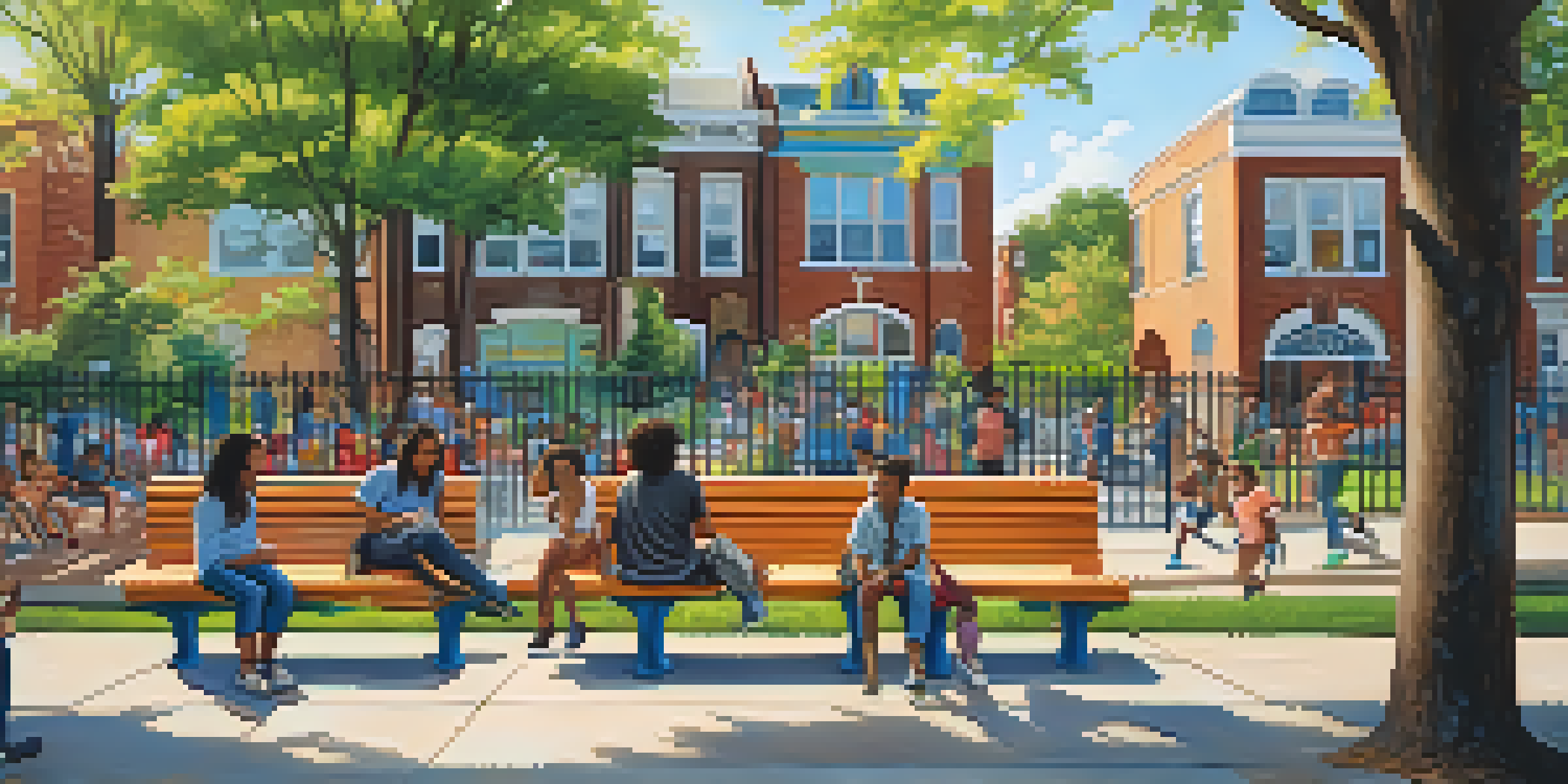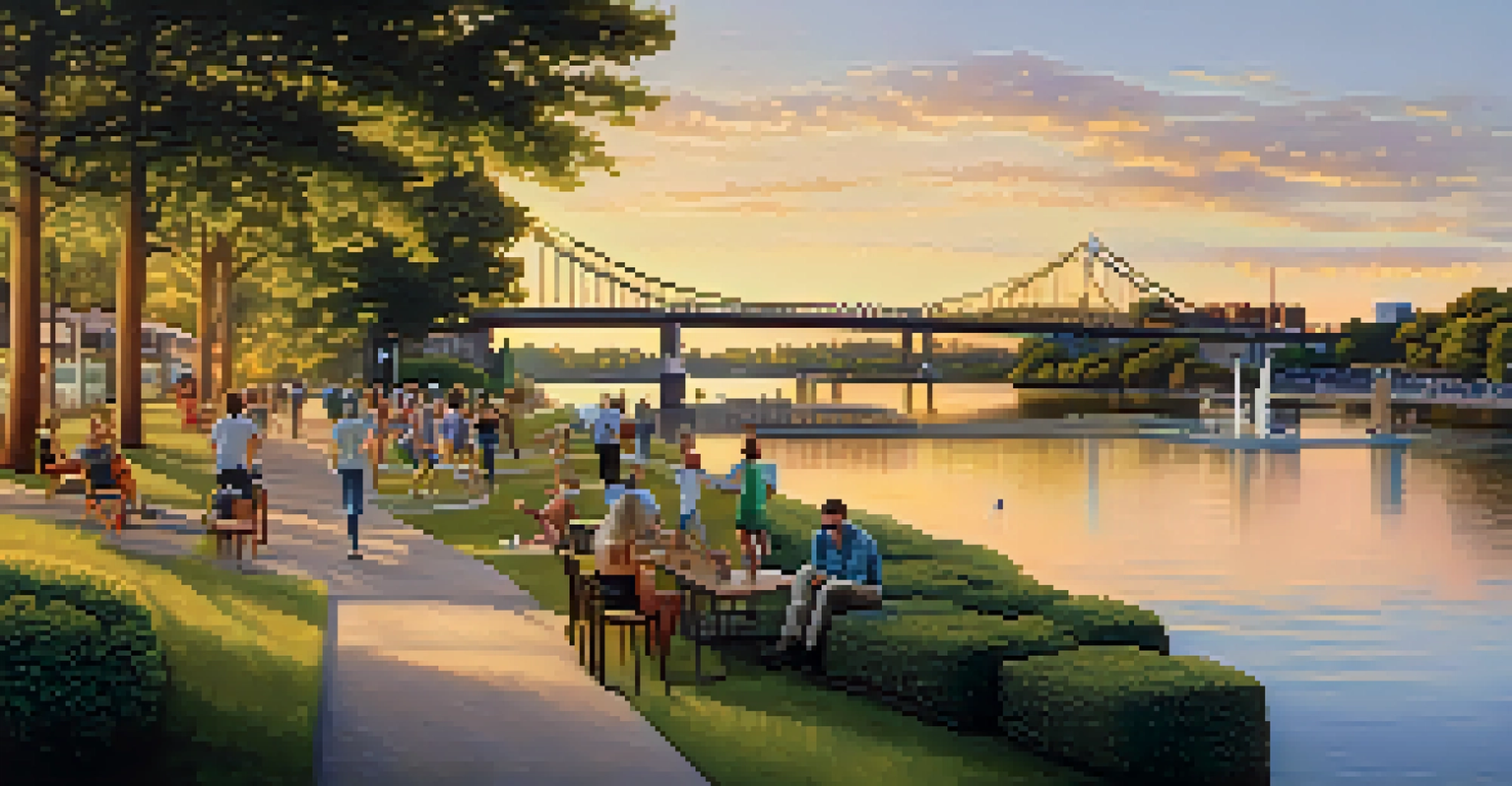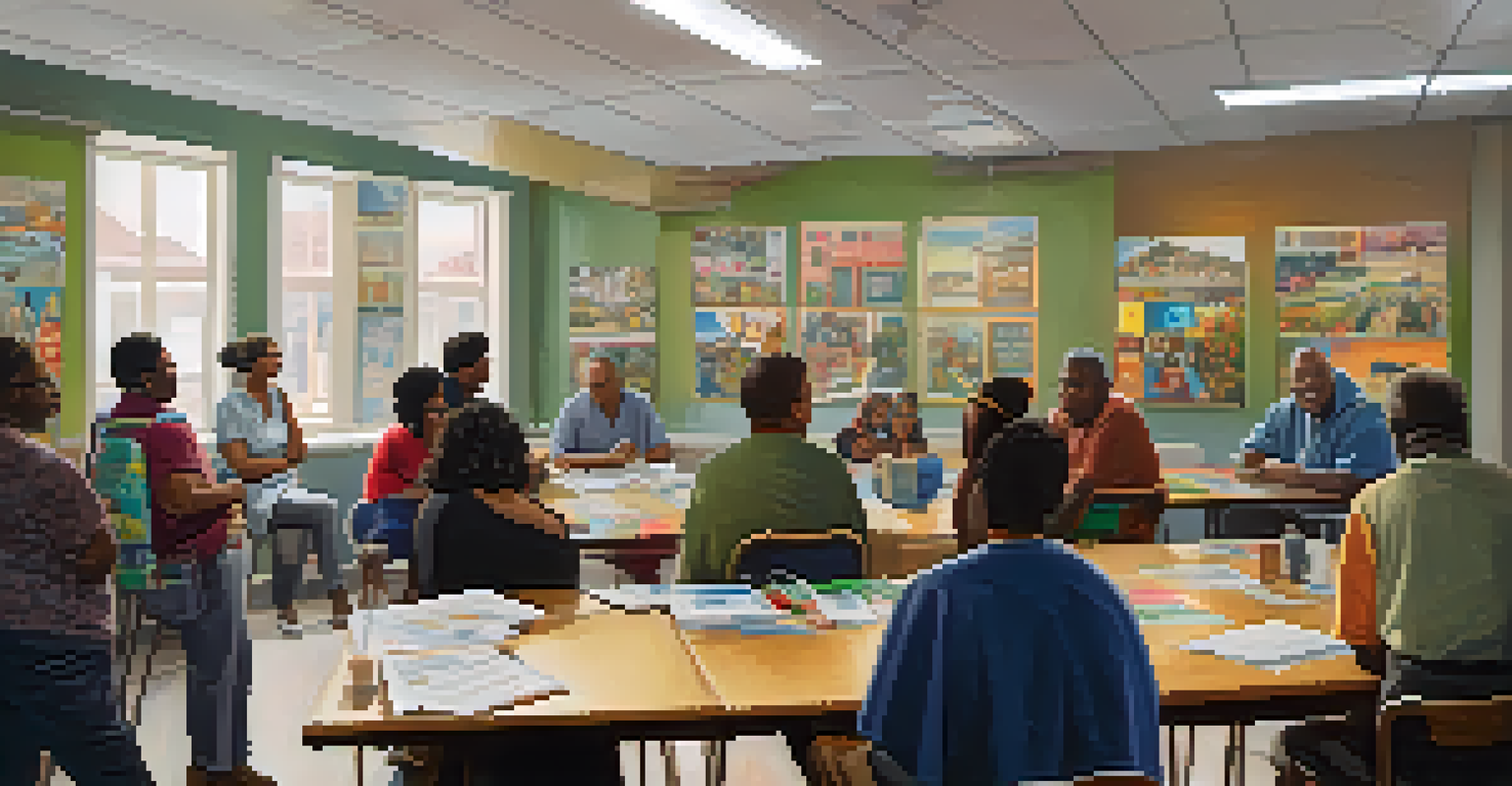Revitalization Efforts in Philadelphia's Urban Neighborhoods

Understanding Urban Revitalization in Philadelphia
Urban revitalization is a process aimed at improving city areas that have fallen into disrepair. In Philadelphia, this initiative focuses on transforming neighborhoods with economic, social, and environmental challenges. By rejuvenating these areas, the city hopes to enhance the quality of life for its residents and stimulate local economies.
A community is like a ship; everyone ought to be prepared to take the helm.
One of the key aspects of revitalization is community involvement. This means engaging local residents in the planning process to ensure their needs and desires are met. When communities have a say, the revitalization efforts are more likely to be effective and sustainable.
Moreover, revitalization isn't just about physical improvements; it's also about creating opportunities. By fostering a sense of community pride and ownership, Philadelphia aims to create neighborhoods where people want to live, work, and play.
Key Projects Driving Change in Philadelphia
Several projects have been pivotal in revitalizing urban neighborhoods across Philadelphia. Notable among them is the transformation of the Schuylkill River waterfront, which has turned an underutilized space into a vibrant hub for recreation and social interaction. This project not only enhances aesthetics but also encourages healthier lifestyles for residents.

The redevelopment of old industrial sites into mixed-use spaces is another critical effort. These areas are now home to shops, restaurants, and residential units, fostering a sense of community and encouraging foot traffic. This blend of uses promotes economic growth while preserving the character of the neighborhoods.
Community Involvement Drives Success
Engaging local residents in the planning process ensures revitalization efforts are effective and sustainable.
Additionally, affordable housing initiatives have been launched to ensure that revitalization doesn't lead to displacement. By providing housing options for all income levels, Philadelphia is working to create inclusive neighborhoods where everyone can thrive.
The Role of Community Organizations in Revitalization
Community organizations play a vital role in the revitalization process. They act as the bridge between residents and city officials, ensuring that local voices are heard and considered in decision-making. This grassroots approach helps to build trust and fosters collaboration among stakeholders.
Art is the most beautiful of all lies; it is a way of expressing the world we live in and envisioning what it could be.
These organizations often lead various initiatives, from organizing clean-up days to advocating for better public services. Their efforts not only improve the physical environment but also strengthen community ties, making neighborhoods more resilient and united.
Moreover, these groups frequently provide resources and support for local entrepreneurs. By nurturing small businesses, they contribute to economic vitality and create job opportunities that benefit the entire community.
Sustainability as a Core Principle of Revitalization
Sustainability is a fundamental principle underlying Philadelphia's revitalization efforts. By focusing on eco-friendly practices, the city aims to create neighborhoods that are not only livable but also environmentally responsible. This includes implementing green building practices and enhancing public transportation options.
Green spaces are also a critical component of sustainable revitalization. Parks and community gardens provide residents with places to gather, relax, and enjoy nature, contributing to overall well-being. These spaces also help mitigate urban heat and improve air quality.
Public Art Enhances Neighborhoods
Artistic initiatives foster community pride and attract visitors, boosting local economies and cohesion.
Additionally, sustainability initiatives often involve educating residents about environmental issues. By fostering awareness and encouraging eco-friendly practices, Philadelphia seeks to cultivate a culture of sustainability that empowers communities to take an active role in protecting their environment.
The Impact of Public Art on Neighborhood Revitalization
Public art has emerged as a powerful tool in revitalizing urban neighborhoods. Murals, sculptures, and installations not only beautify spaces but also tell the stories of the communities they inhabit. This artistic expression fosters a sense of identity and pride among residents.
Moreover, public art can attract visitors and boost local economies. When neighborhoods showcase vibrant art scenes, they become destinations for both locals and tourists. This influx of visitors can lead to increased foot traffic for local businesses, further stimulating economic growth.
Additionally, art initiatives often involve community participation, allowing residents to collaborate with artists. This not only creates a sense of ownership over the art but also strengthens community bonds, making neighborhoods more cohesive and engaged.
Challenges Faced in Urban Revitalization Efforts
Despite the positive strides made in revitalization, challenges persist. One significant hurdle is the risk of gentrification, where rising property values can displace long-time residents. Balancing development with affordability is crucial to ensuring that revitalization benefits all community members.
Another challenge is securing adequate funding for projects. While grants and public investments play a vital role, many initiatives rely on private funding sources, which can be unpredictable. This necessitates strong partnerships and innovative fundraising strategies to maintain momentum.
Sustainability is Key to Revitalization
Philadelphia's focus on eco-friendly practices aims to create livable neighborhoods that are environmentally responsible.
Lastly, coordinating between different stakeholders—residents, businesses, and government—can be complex. Establishing effective communication channels is essential to navigate differing priorities and ensure that revitalization efforts are aligned with community needs.
Looking Ahead: The Future of Philadelphia's Urban Neighborhoods
As revitalization efforts continue, the future of Philadelphia's urban neighborhoods looks promising. With a focus on sustainability, community involvement, and economic growth, the city is paving the way for thriving, inclusive spaces. These efforts are not just about physical transformation but also about fostering a vibrant community culture.
The lessons learned from current projects will inform future initiatives, ensuring that they are adaptable and responsive to changing needs. By prioritizing the voices of residents, Philadelphia can create a blueprint for urban revitalization that serves as a model for other cities.

Ultimately, the goal is to create neighborhoods where everyone feels at home. Through collaborative efforts and a commitment to inclusivity, Philadelphia's urban neighborhoods can emerge stronger, more resilient, and filled with opportunity for all.